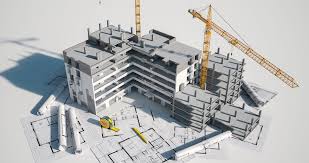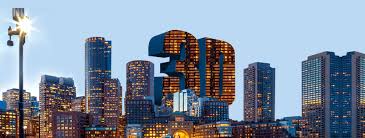
Could We 3D Print Entire Cities? The Technology Is Here
What once sounded like sci-fi fantasy is now a real, working possibility: 3D printing entire buildings—and even full neighborhoods—is no longer a theory. It’s happening.
From homes printed in 24 hours to massive concrete structures extruded by robotic arms, 3D printing technology is reshaping how we build. And in the near future, it could completely redefine what cities look like, how fast they grow, and how much they cost.
Let’s take a look at how this game-changing tech is unfolding, and what it might mean for your neighborhood, your wallet—and even the planet.
🏗️ What Is 3D-Printed Construction?
3D-printed construction uses large-scale printers—often robotic arms mounted on rails or cranes—that extrude concrete, clay, or other building materials in layers. Think of it like a giant piping bag that “draws” the walls of a building, guided by a digital blueprint.
These printers can construct:
-
Single-family homes
-
Apartment complexes
-
Emergency shelters
-
Bridges, offices, and even military bunkers
And unlike traditional methods, they can do it faster, cheaper, and with almost zero human error.
🚀 Why It’s Catching Fire Worldwide
1. Speed
A traditional home can take months. A 3D-printed version? Under 48 hours of actual print time.
2. Cost Efficiency
Fewer workers, less waste, and bulk raw materials mean savings of 30–70% on construction costs. In a housing crisis, that’s a big deal.
3. Design Freedom
Organic shapes, curves, and futuristic designs that would cost a fortune with conventional construction can be printed effortlessly.
4. Sustainability
Eco-friendly printing materials like recycled concrete, hempcrete, or even regolith (moon dust!) are being developed to reduce emissions and energy use.
🌍 Around the World: It’s Already Happening
-
Mexico: A 3D-printed neighborhood of 50+ homes was created for low-income families by ICON and New Story.
-
Dubai: Home to the world’s largest 3D-printed building (two stories tall!), the city aims to have 25% of all new construction 3D-printed by 2030.
-
United States: Texas-based companies are printing full subdivisions, while NASA and ICON are exploring printing habitats on Mars.
🧱 Could We Really Print Entire Cities?
In theory — yes. The technology exists. The real question is scale and infrastructure.
Imagine massive robotic fleets printing:
-
High-rise apartments
-
Roads, sidewalks, and utility tunnels
-
Parks, public sculptures, and even schools
With the right planning and materials, an entire city block could be printed in weeks instead of years. And in disaster zones or refugee camps, this speed could literally save lives.
⚠️ The Roadblocks
Before cities are 100% printable, a few challenges remain:
-
Permitting and regulations need to catch up with tech.
-
Structural limits: Right now, most printed buildings are low-rise.
-
Material durability: Long-term performance of new printing mixes still needs real-world testing.
-
Skilled labor: Ironically, the shift still requires new types of workers—robot operators, AI modelers, and engineers.
🔮 The Future of Urban Design?
3D printing could empower architects to create adaptive, nature-inspired cities. Think:
-
Buildings shaped like coral reefs to optimize airflow
-
Modular communities that expand organically
-
Solar-printed panels built directly into walls
And with AI-generated blueprints, these cities could be self-optimizing, climate-resilient, and even personalized down to the house.
Final Thought
The question is no longer “Can we 3D print cities?” It’s “How soon will we?”
The fusion of digital design, robotics, and sustainable materials is reshaping our built environment. Whether you’re in a luxury apartment or affordable housing unit, there’s a good chance that, in the next decade, the walls around you might be 3D printed — layer by layer, robot by robot.
